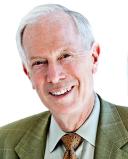Psychiatry
Psychiatry Celebrates Its Top-Ten Hits
But it points to a field that has run into the sand
Posted November 24, 2014
In the current issue of the journal History of Psychiatry, Mark Micale, who teaches psychiatric history at the University of Illinois and is one of the most important international figures in the field, answers the question, “What have been the ten most important changes in psychiatry since World War II?”
He sent out a questionnaire, and has been asking audiences systematically for several years what they think the big changes are. The phrasing of the question invites positive, not critical, responses, and the list is interesting for the lack of insight many psychiatrists display towards their field.
The top ten:
1. The drug revolution of the 1950s. No quarrel there. Psychiatry is now the highest prescribing specialty among all medical fields. Nine consultations in ten end with prescribing a psychoactive drug. Many are effective, such as lithium in mania, but still, this is somehow out of control.
2. Deinstitutionalization: moving thousands of patients from the safety of the mental hospitals onto the streets and into the jails. This, of course, is my (very accurate) take on what has happened. But so effective was the anti-asylum propaganda campaign of the flower-children during the 1960s that many people now view this tragic loss of safety and protection as an important gain!
3. The “decline and fall” of psychoanalysis. Roger there! It is astonishing how the entire medical field of psychiatry was bamboozled by psychoanalysis from about the 1920s to the 1970s. Psychiatrists actually asked patients about their toilet training when taking histories, and dreams were earnestly recounted. This is like introducing Tarot cards to cardiology.
4. Shifting psychotherapy from psychiatrists to non-psychiatrists, such as psychologists and social workers. This has happened, for sure, but psychotherapy is important and giving it to non-physicians is not necessarily a triumph, although non-medical psychotherapists make perfectly effective counselors.
5. The rise of neuroscientific research into neurochemistry, neuroimaging and other neuro-fields. But in fact, the neurosciences have had relatively little impact on clinical psychiatry, although we chatter incessantly to the residents about them. The reality is, that in the effective treatment of patients, the neurosciences have not contributed a great deal, with the exception of psychopharmacology (also a neuroscience), which has indeed contributed lots.
6. The introduction of the Prozac-style “antidepressants” since the late 1980s. Come again? This drug class, the so-called “SSRI’s” (a marketing concept), has been responsible for a terrific setback in psychopharmacology, displacing the tricyclic antidepressants and other older classes of effective mood drugs. The door was opened by DSM-3’s fiction in 1980 that there was only one depression, “major depression”; later, it was determined that Prozac and its cousins were perfectly fine for it – and had no side effects! This has turned out to be the Big Lie because (a) there are two very different depressions, melancholia and what used to be called the “psychoneuroses.” And whlle the SSRIs may have been adequate for garden-variety dysphoria (not feeling well in your skin), they have not treated melancholia effectively, and melancholia is the illness where patients commit suicide. And (b) the SSRIs are loaded with side effects, possibly inducing alcoholism and certainly inducing impotence. How these ineffective drugs could be considered a “chief advance” is a mystery; it constitutes evidence that many who responded to Micale’s questionnaire have been brainwashed by pharma advertising.
7. An increase in Big Pharma’s influence. For sure. But many of the respondents got the mechanism wrong. Big Pharma doesn’t influence the field by advertising drugs, but diagnoses. Such non-scientific diagnoses as “major depression” and “social anxiety disorder” have been relentlessly flogged in the pharma ads. And if you, as a clinician, accept that there is such a thing as “major depression,” then, yeah, you’ll reach for your pre-printed pad of Prozac prescriptions.
By the way, virtually nobody mentioned as a victory for the field the increasing acceptance today of electroconvulsive therapy. It’s a big triumph, widely ignored because people can’t get “One Flew Over the Cuckoo’s Nest” out of their minds and poor Jack Nicholson sitting there with his brains burned out. A Hollywood fantasy is taken as a scientific fact.
8. Growth in influence of the DSM. No doubt of this, but it’s been a disaster for the field. All these artifactual diagnoses were created, the sturdy performers of yore forgotten. Psychiatry now has hundreds of diagnoses! Hundreds of distinct diseases. Who knew . . .
9. Repeats eight. The multiplication of diagnoses, a triumph of differentiation and individuation? Or a highly politicized diagnosis-sausage-machine run amok?
10. The de-pathologizing of homosexuality. Yes, fine. This happened, by the way, in DSM-3-R in 1987, not in DSM-3 in 1980. (But even in DSM-3-R “distress about sexual orientation” remained as a diagnosis.) And all the other moralizing sex diagnoses remain even today intact: consensual roleplaying and fetishism are still ranked up there with bestiality and rape. Psychiatry needs to get out of the bedroom tout court, not just out of the gay bedroom.
This top-ten list points to a field that has run into the sand, not one that has advanced from triumph to triumph.
Teaser image courtesy of Shutterstock / nito




